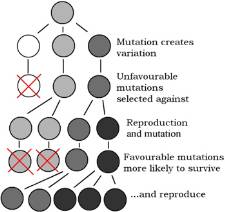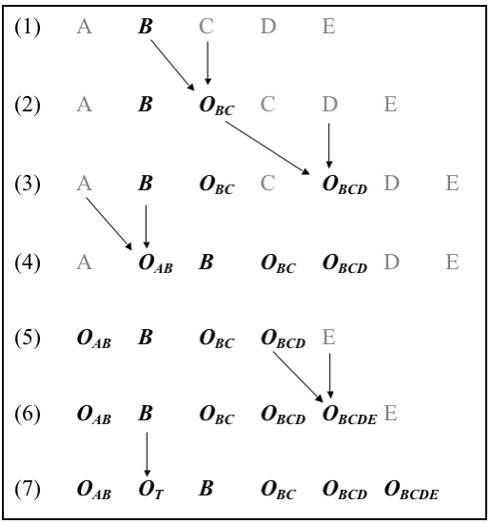Natural Selection
Online Biology Dictionary

|
| Natural selection among individuals (Image: Wikimedia) |
A definition of natural selection can be given either for individuals or for forms of life. Conventional evolutionary theory describes evolution primarily in the former manner, that is, as a matter of selection among individuals (and, sometimes, among groups) within reproductively isolated populations (see figure at right).
In contrast, stabilization theory, the evolutionary theory described on this website, argues for the latter view, that evolution is primarily a process selecting between distinct, stable forms, or types of organisms, and that selection between individuals has a negligible evolutionary effect. Under this view, new stable forms are produced by non-Mendelian stabilization processes. These two ways of thinking about natural selection can be better understood by a consideration of the following two formal definitions:
A definition of natural selection with regard to individuals (the definition given under conventional neo-Darwinian theory):
A natural process taking place within a population. During this process individuals with certain heritable traits produce more offspring than individuals lacking those traits. Since the traits are heritable, individuals with those traits gradually become more common in the population over time.
A definition of natural selection with regard to forms of life (the definition given under stabilization theory):
A natural process taking place within successive similarity sets. A similarity set is a set of forms all of which can hybridize with at least one other form in the set. Some forms within such a set will hybridize to produce new types of organisms (or produce them by any other stabilization process) at greater rates than other forms in the set. The heritable traits of those forms producing more offspring forms will, obviously, be present in a higher proportion of offspring forms in subsequent similarity sets, than will the traits of those forms that do not succeed in producing so many offspring forms. With the passage of time, a higher proportion of forms in the similarity set will possess those traits that have assisted in the production of new offspring types (see figure below).

|
|
Above: Natural selection among forms. A series of similarity sets showing the spread over time of an advantageous trait (forms with this trait shown in bold italic); (1) Initial similarity chain. A series of five different types of organisms, A, B, C, D, E (adjacent forms in the series are assumed to be more similar and hence more hybridizable). At first, the only form with the beneficial trait is B; (2) B has hybridized with C to produce offspring form OBC (in the figure "O" stands for "offspring form"); (3) OBC has hybridized with D to produce offspring form OBCD; (4) A has hybridized with B to create offspring form OAB; C has become extinct; (5) A and D have become extinct; (6) OBCD has hybridized with E to create offspring form OBCDE; (7) B has produced a tetraploid OT; E is now extinct. From the set of forms in the original chain only B has survived; all forms in the similarity chain now have the trait. |
Most shared on Macroevolution.net:
Human Origins: Are we hybrids?
On the Origins of New Forms of Life
Mammalian Hybrids
Cat-rabbit Hybrids: Fact or fiction?
Famous Biologists
Dog-cow Hybrids
Georges Cuvier: A Biography
Prothero: A Rebuttal
Branches of Biology
Dog-fox Hybrids